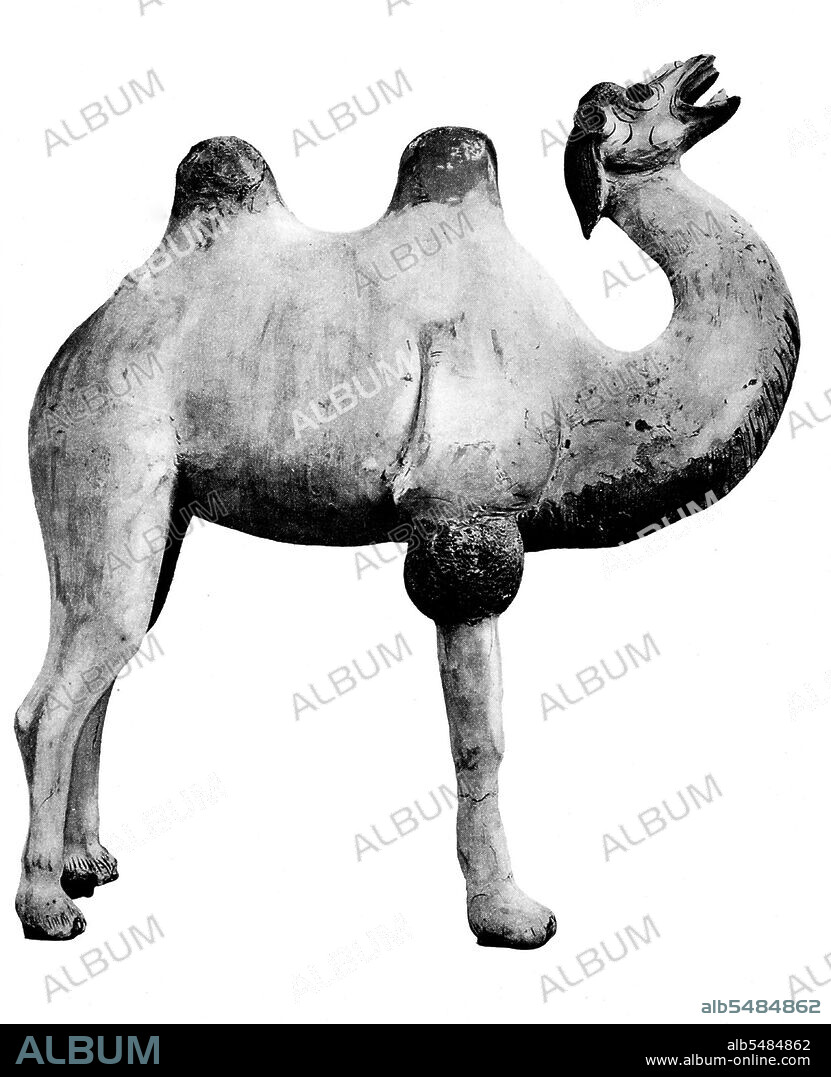alb5484862
Clay model of a camel from Astana Cemetery, Turfan, Xinjiang.

|
Add to another lightbox |
|
Add to another lightbox |



Title:
Clay model of a camel from Astana Cemetery, Turfan, Xinjiang.
Caption:
The Astana Graves are a series of underground tombs located 6km from the ancient city of Gaochang, and 42km from Turpan, in Xinjiang, China. The tombs were used by the inhabitants of Gaochang, both commoners and locals, for about 600 years from 200 CE - 800 CE. The complex covers 10 square kilometers and contains over 1,000 tombs. Different plots for separate castes and families are marked by gravel dividers. Due to the arid environment many important artifacts have been well preserved at the tombs, including natural mummies. A typical tomb is entered by a 10 meter sloping staircase. The tombs are not very large, usually only 2 meters high. Some tombs also have murals inside. The deceased were laid on a small raised platform in the back of the tomb, surrounded by possessions and even food. Their faces were covered by cloths, some of which have distinct Persian motifs. A small funeral brick was placed to next to each body, on which was written the person's name and other biographical information. These bricks have been incredibly useful for historians to date the tombs' finds. There are also various Tang Dynasty figurines and silk paintings in the Astana Graves. A new pavilion has been built outside the old graveyard; the centerpiece is a large statue of Fuxi and Nuwa based on the silk banners found on the inner ceilings of the tombs.
Credit:
Album / Pictures From History/Universal Images Group
Releases:
Model: No - Property: No
Rights questions?
Rights questions?
Image size:
3773 x 4650 px | 50.2 MB
Print size:
31.9 x 39.4 cm | 12.6 x 15.5 in (300 dpi)
Keywords:
ASIA • ASIAN • ASTANA • BOUTIQUE • BUDDHISM • BUDDHISM, BHUTANESE • BUDDHIST • CAMEL • CHINA • CHINE • CHINESE • COMMERCE • CULT, BUDDHIST • ECONOMY • HISTORIA UNIVERSAL • HISTORIA • HISTORICAL • HISTORY • PORCELAIN • RELIGION • SILK ROAD • SILK ROUTE • TRADE ROUTES • TRADE • TRADING • XINJIANG
 Pinterest
Pinterest Twitter
Twitter Facebook
Facebook Copy link
Copy link Email
Email

